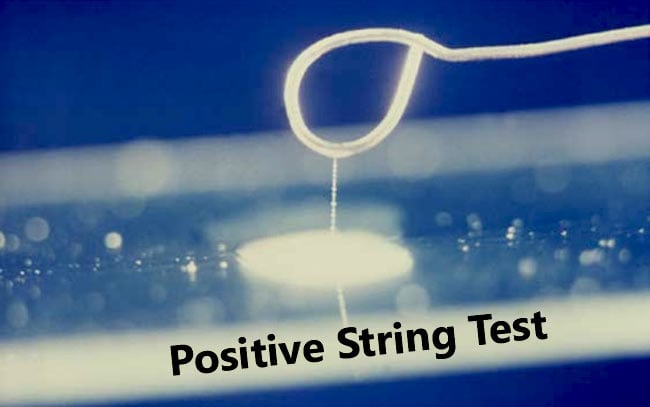Vibrio cholerae is a gram-negative bacilli bacteria with a “comma” shaped body and a flagella for the movement. V. cholerae and V. mimicus are the only Vibrio spp. that do not require salt for growth. The string test may be performed on a glass microscope slide or plastic petri dish by suspending 18 to 24 hour growth from Heart Infusion Agar (HIA) or other non-inhibitory medium in a drop of 0.5% aqueous solution of sodium deoxycholate.
Principle of String test
If the result is positive, the bacterial cells will be lysed by the sodium deoxycholate or Sodium taurocholate, the suspension will lose turbidity, and DNA will be released from the lysed cells causing the mixture to become viscous. A mucoid “string” is formed when an inoculating loop is drawn slowly away from the suspension.
Uses of String Test
- String test is used to separate Vibrio spp. from Aeromonas spp. and P. shigelloides.
- String test is used to differentiate Vibrio cholerae (string test positive) from other Vibrio spp. (string test negative).
Procedure of String Test
- Take a clean grease free slide and add a drop of 0.5% sodium deoxycholate or Sodium taurocholate.
- Emulsify an organism in the slide using an inoculating loop.
- Keep on rubbing the loop vigorously for 2-3 minutes until the liquid appears viscous.
- Then, pull the inoculating loop upwards from the slide.
- Observe for a mucoid “string”.
Result of String Test

Positive Test: Appearance of String (thread like mucoid) when the loop is pulled upwards.
Examples: Vibrio cholerae
Negative Test: No appearance of String when the loop is pulled upwards.
Examples: Aeromonas spp. and P. shigelloides
Similar Posts:
- Bile Solubility Test- Principle, Reagents, Procedure and Result Interpretation
- Widal Test- Introduction, Principle, Procedure, Interpretation and Limitation
- Potassium Hydroxide Test – Principle, Procedure, Uses and Interpretation
- Thiosulfate-Citrate-Bile Salts-Sucrose (TCBS) Agar- Composition, Principle, Uses, Preparation and Colony Morphology

Very informative article with simplified explanation. Really love it.